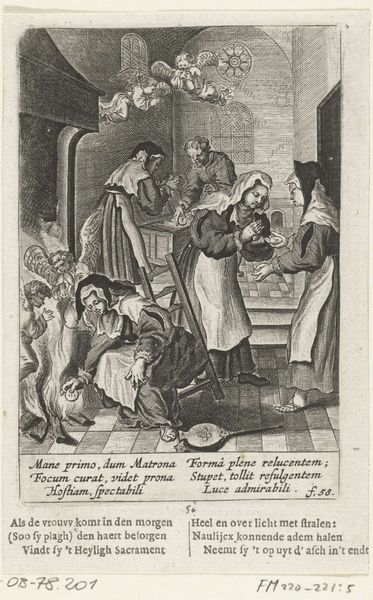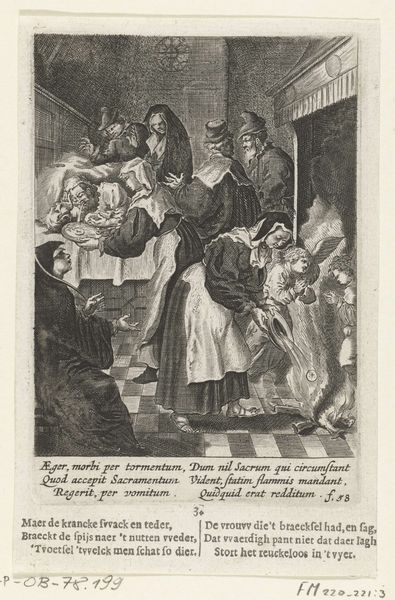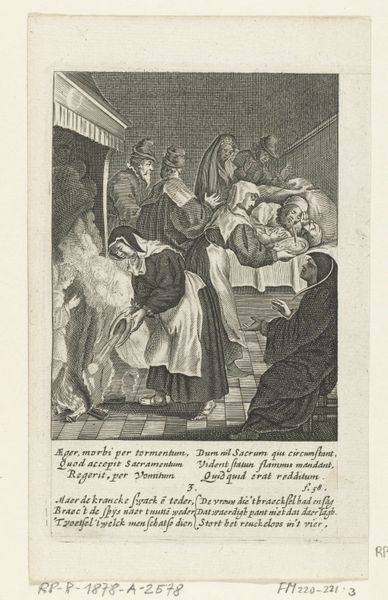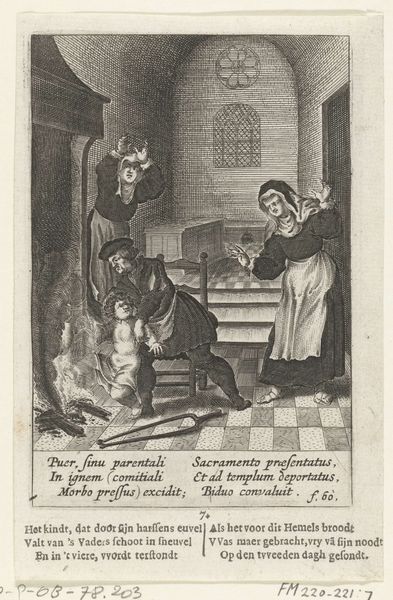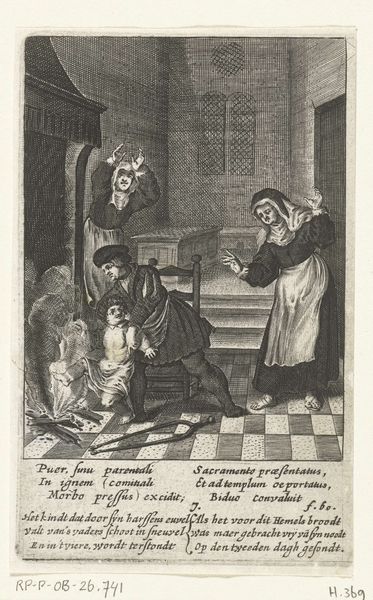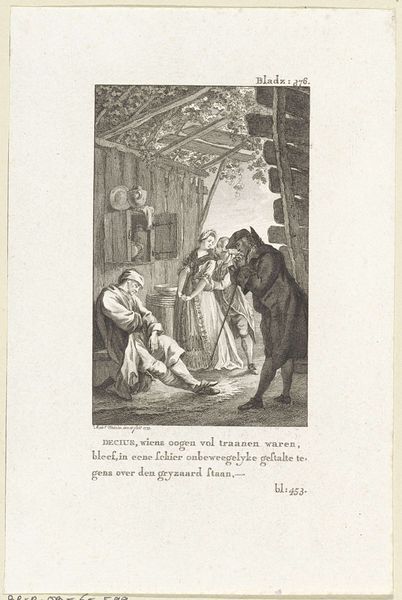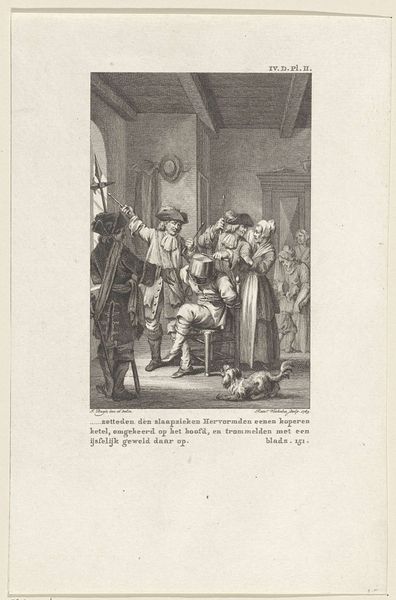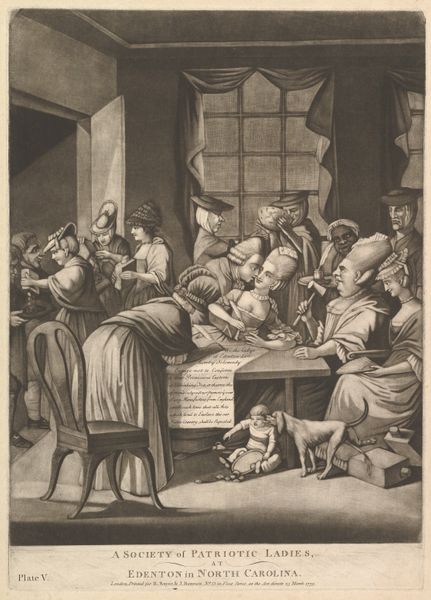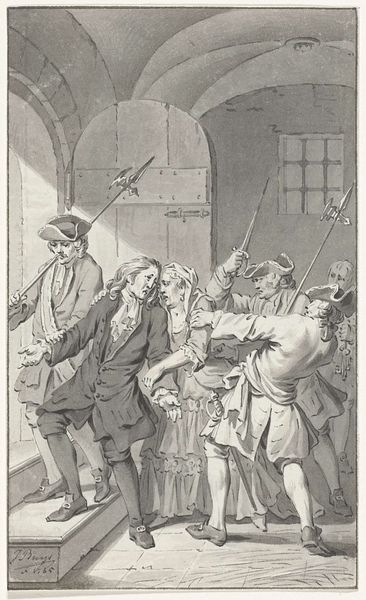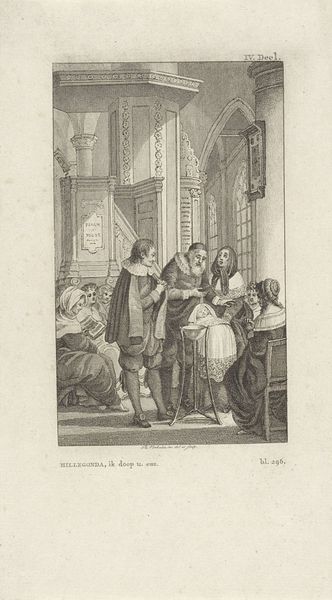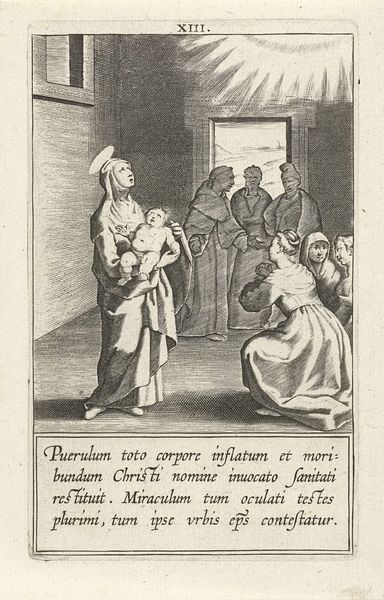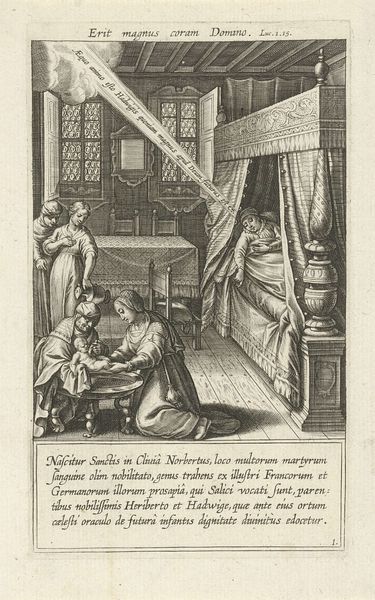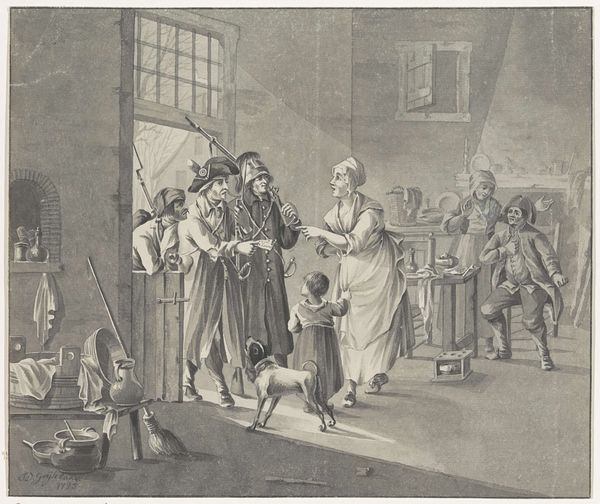
print, engraving
#
narrative-art
#
baroque
# print
#
old engraving style
#
figuration
#
history-painting
#
northern-renaissance
#
engraving
Dimensions: height 134 mm, width 84 mm
Copyright: Rijks Museum: Open Domain
Curator: Here we have a 17th-century engraving by Boëtius Adamsz. Bolswert, titled "Vrouw vindt de ongeschonden hostie tussen de as" or "A Woman Finds the Unsullied Host Among the Ashes". It’s currently housed in the Rijksmuseum. Editor: The detail in the monochrome engraving is stunning, and the textures are rich given it’s just lines. I’m immediately drawn to the figure on the lower left; the contrast between her dark clothing and the fiery light reflecting off her face is striking. Curator: The artwork portrays a religious scene rooted in the political and social tensions of the period. Note the reactions and body language; they highlight societal reverence for religious icons but also suggest perhaps an underlying unease or curiosity about the perceived miraculousness. Editor: Looking closer at the medium—the print itself—it’s interesting how accessible this made the narrative to a broader audience, which I believe is tied to issues of consumption of and belief in this narrative. Was this widely circulated, fueling particular agendas or solidifying communal identity around ideas of faith, devotion, and even moral conduct? Curator: Exactly. Consider the broader socio-political implications: the engraving, depicting a supposed miracle, would resonate powerfully among Catholics. This event reinforced faith, providing visual propaganda amidst rising tensions and persecution. Editor: We cannot ignore the means of production: Bolswert’s skill in engraving directly contributed to this artwork’s dissemination. Who was consuming these images? And to what end? The material reality underscores that devotional acts and experiences were also commodity exchanges. Curator: Examining the interplay between gender and faith—a woman, discovering a miracle in the ashes of the hearth—speaks volumes about the domestic sphere being the site of profound religious experiences. Also, note how it empowered women in domestic space and what bearing that empowerment may have had in broader power struggles. Editor: I agree completely; this work, at first glance, communicates reverence, it encourages our reflection upon broader social and cultural meaning of material, medium, circulation, gender, faith, and labor. Curator: The convergence of socio-historical, personal experience and skillful engraving, I believe makes Bolswert's artwork an intersectional historical artifact. Editor: Absolutely. And it serves to further our contemporary inquiry, using materiality to address critical questions surrounding early-modern beliefs and behaviors.
Comments
No comments
Be the first to comment and join the conversation on the ultimate creative platform.
